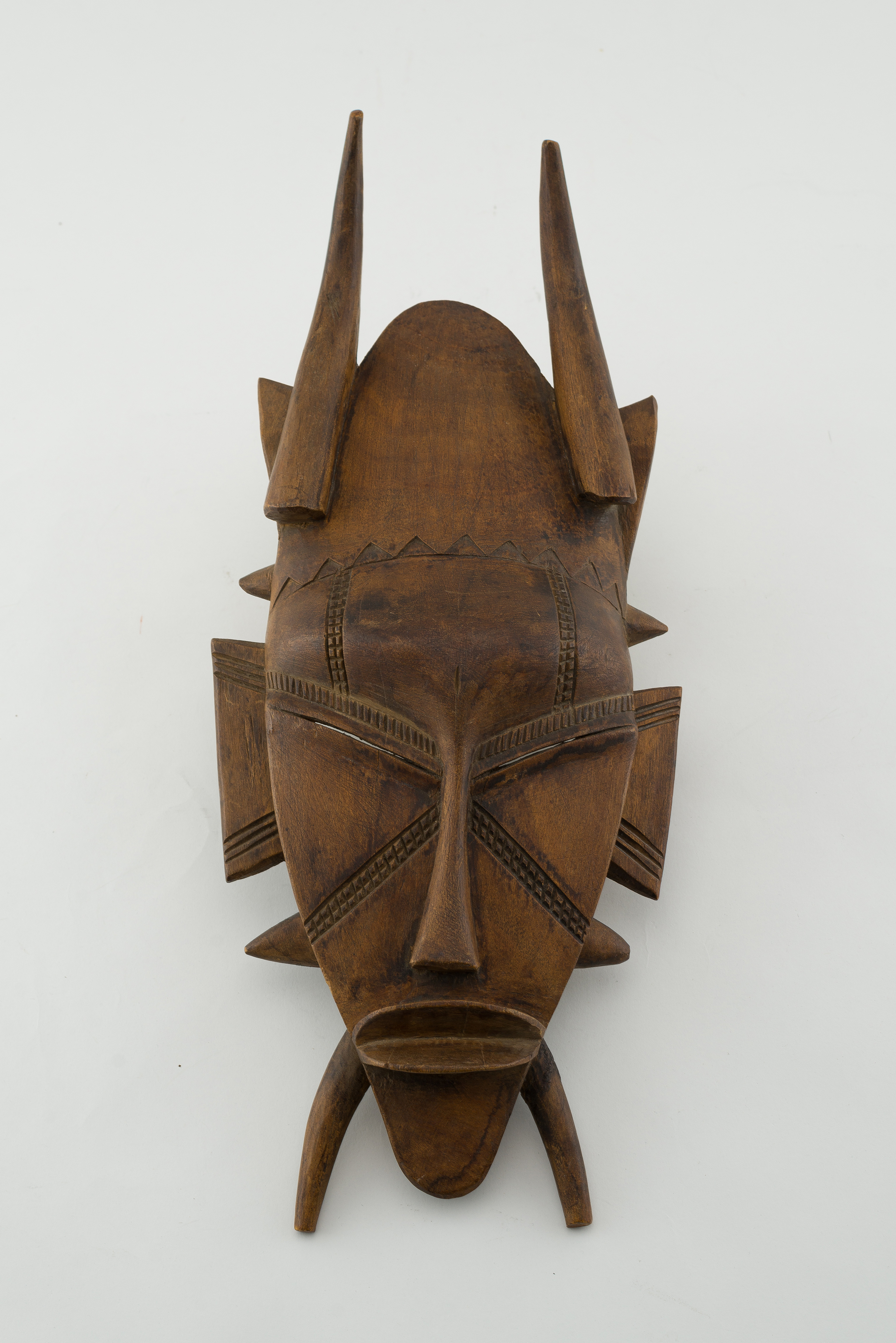Walu Mask
← Back to search- Title Walu Mask
- Category Sculpture
- Medium Wood
- Medium Tribal
- Dimensions 20"h x 8"w x 4"d
- Framed Dimensions 19.5"h
- Notes Walu directly translates to antelope in the Dogon language. The mask is used by the Dama Society, an adult male organization of the Dogon*. It is primarily used during funeral rites; as the appearance of the mask ensures that the dead man’s spirit is removed from the village and conducted to the ancestral realm. The mythology of Walu tells of Walu being born at the time of the sacrifice of Nommo, the mythic genitor of humanity, which took place in the heavens*. During use, the wearer of the Walu mask holds a long stick in his hand to support his steps. Sometimes, he approaches the procession of other masks and gives blows with his horns. The mask has slightly asymmetrical horns, a long nose and face, as well as large lips and slit eyes. The mask is unpainted, which means it no longer holds value to the Dogon. “A wooden mask headpiece that has not yet been painted was referred to in Ideily as dege (statue) or lajugo nuyu (mask dead). Yet, at the moment that paint was applied, the sculpted object was said to be transformed into lajugo neyuyen (mask living).” *Germaine Dieterlen, “Masks and Mythology among the Dogon.” (African Arts, vol. 22, no.3, 1989), 34-88. *Polly Richards, “What’s in a Dogon Mask.” (RES: Anthropology and Aesthetics, no. 49/50, 2006), 92-114.
- Artist Dogon Malian
- Credit Clyde and Annie Matters Collection
- Location Weyerhaeuser Third floor display case
- Accession Number 1994.0006
- Status Checked Out
-
Administration
Admin View
Edit Details
